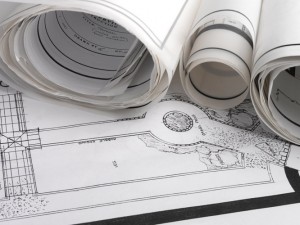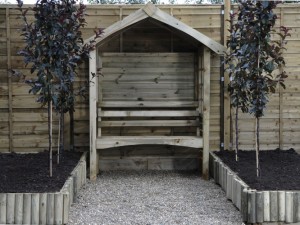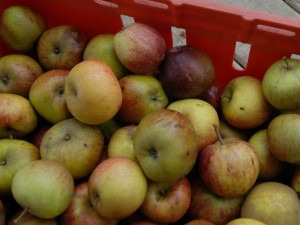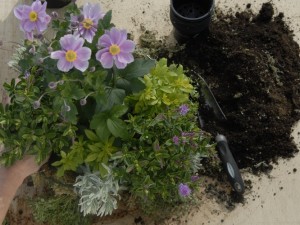Planning a garden
Planning a garden needs to be a carefully considered decision-making process, where you take plenty of time in adding up the pros and cons of all your ideas and inspirations. Doing as much research as possible at the planning stage will always pay dividends in the long term, as your garden gradually matures.

Always a good idea to draw a scale plan of your ideas. You only need a piece of graph paper and a pencil.
There are many elements that you can introduce to your garden. Consider what you use your garden for most: relaxing, playing, growing plants or veg? Also, how much time do you want to spend maintaining your garden – would a patio with a few pots be better than a lawn and border overflowing with plants?
Gardens are a combination of rigid structures and plant growth, and so you really need to try and visualize how any planting plans you have will combine with the solid structures in your garden plan.
Below, I’ve provided a few ideas and pointers about what I consider to be a some of the more important considerations for garden planning.
Garden buildings and structures
- Fences can define different parts of the garden, support and protect climbing plants, provide a secluded, sheltered backdrop to a patio, or make a simple arbour.
- A pergola on a terrace, or linking areas of the garden, makes a shady open-air retreat, and will support cascading plants.
- Garden buildings should be carefully placed. You may need water and electricity, so a site near to the house is useful.

Combining garden structures with clever planting can create great effects even in the smallest gardens.
- Sheds and summerhouses can be softened with trellis and provide shelter.
- A patio is straightforward to build, but it is a permanent feature, so carefully consider where it should go. South-facing areas get most sun (in the northern hemisphere).
- Decking will be long lasting and durable if you use pressure-treated timber and screws designed for the job.
- Paths need to be made of hard-wearing materials. Gravel is simple, good looking and easy to lay and maintain. Raking a gravel path refreshes the whole garden.
- For more information on structural aspects of your garden, check out my ‘Garden Structures’ guides, along with my ‘Paths, Paving and Patios’ guides.
Planting and growing
- Tool quality is normally reflected in the price. Choose the best you can afford and, initially, buy essential tools only.
- Mixed plantings of small trees, shrubs, bulbs, annuals and herbaceous plants that have a long flowering season will combine and interplay with each other for a display that looks good throughout the year.
- A lawn is a focal point in the garden and it is easier than you think to get the lawn looking good and the garden even better.
- Home-grown vegetables are convenient. Grow your favourites, or ones you can’t buy in shops.
-

Apples are just so easy to grow…..for anybody!
Fruit can be grown in the smallest gardens. Modern root stocks make the training and pruning of dwarf trees easy.
- Hedges are an inexpensive way of making boundaries to protect the garden, give privacy and divide the garden into compartments linked by paths or a patio. Choose formal yew, beech and box, or rustic hawthorn, privet or holly. Good soil preparation is essential as hedging plants are planted unnaturally close, so need special care.
- Trees planted at regular intervals on either side of a path are appealing. Stake trees in windy places – a rigid plastic tie makes a buffer between stake and stem and can be expanded over time.
- Garden focal points are often man-made – a statue, urn, seat or container of plants – or trees and shrubs clipped into shape.
- Shrubs and small trees look good in pots too. Plants unsuitable for your garden soil type can be given special compost when in a pot.
- A border composed of hardy perennial plants will always look at its best in the middle of the summer. Small shrubs and trees can be planted for volume, and roses, bulbs, tender perennials and annuals will extend the flowering season.
- Shrubs are normally planted singly and perennials in clumps. Borders should look pleasing close up as well as from a distance.
- Roses need fertile soil, spraying in the summer to keep them healthy, and pruning to allow light and air into the bush to fight pests and disease.
-

Planting up hanging baskets is straightforward and good for brightening up any part of your garden.
Put pots and hanging baskets in lifeless parts of the garden where continuous colour is needed. Change and renew them several times a year.
- Keep beds weed free, edge regularly and deadhead to promote flowering.
- If you grow herbs in a separate area, frames of lavender, sage or rosemary, and strong edgings of violas, chives or pinks, will divert attention from the untidier herbs. Keep invasive mint and soapwort at bay by digging out old crowns and keeping young root stock.
- When planting against a wall architectural plants will act as a buttress and connect buildings to the ground, while curtains of foliage soften hard lines. Fences or walls will also support espaliered fruit trees, which are both functional and decorative.
- Feed a lawn in spring and autumn to improve its appearance and set the lawnmower high to prevent the build up of moss.
- In a greenhouse, plants can be enjoyed that can’t be grown in open ground, out of season crops can be grown, and plants can be propagated that would otherwise have to be bought. Begin with frames or cloches as a cheaper starting point.
All this information covers many (but not all!) of the points you need to consider when planning a garden, or even when just updating a few areas in your existing garden layout. In the coming weeks, I’ll be producing a number of guides on planting techniques, and all sorts of instructions for growing most things in your garden  – please check back to see what I’m up to!
